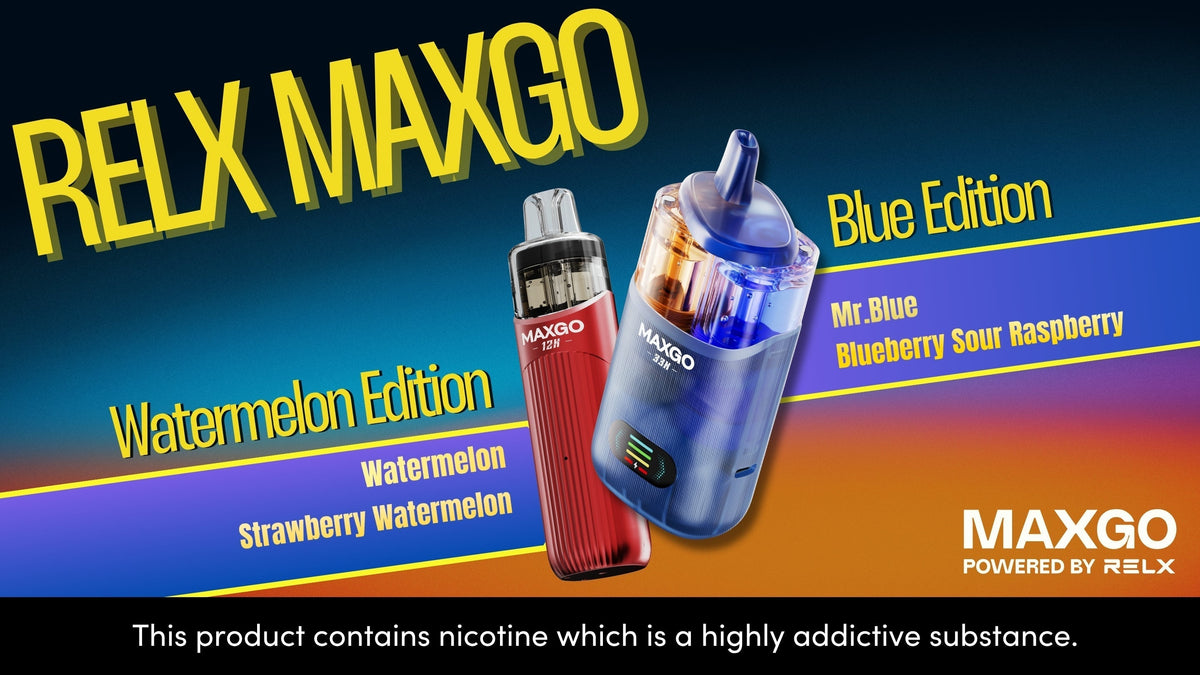What Is a Vape Pen, and How Many Types Are There?
At RELX, we're passionate about making reliable vape pens of the highest quality. If you recently switched to vaping, knowing what vape pens are, their uses, and the different types available is essential.
Contrary to popular belief, vape pens have a long, rich history. They are complex devices, but they're becoming more accessible and easier to use as technology advances. The look, feel, and portability of these devices has also exploded in recent times to include innumerable colours, shapes, and sizes.
Explore the history, development, and functionality of vape pens with RELX's definitive guide.
What Is a Vape Pen?
Once upon a time, the devices we now know as vape pens, mods, pods, and tanks went by the technical name of electronic nicotine delivery systems, or ENDS. The purpose of these systems was to do what their name suggests—deliver nicotine via electronic pathways.
Nowadays, the world of vaping has expanded to include many different devices that vaporise many different substances. Vapes, in other words, are not just for those looking for nicotine consumption—some cartridges don't contain nicotine at all.
Rather than having to carry around a carton, papers, material for rolling, a lighter, and all that messy, easy to misplace stuff, you need now only carry around a single, USB-sized pen. And using the pen is as easy as pressing a button.
A Brief History of Vape Pens
Trends come and go, but vape pens are here to stay if we look at the numbers around vaping. A 2018 Gallup poll showed that traditional tobacco and nicotine consumption is declining across all age ranges while vaping is rising.
That shift in consumer habits has a lot to do with the history of vape pens. Few people know the whole story.
You might think vaping is a decidedly modern phenomenon, given the tiny mechanical and electronic bits that power most vape pens. But in fact, the first patent related to electronic vapouriser technology came about in 1927 and acquired recognition in 1930.
Through the 1960s and '70s, inventors like Herbert A. Gilbert and computer scientists like Phil Ray developed the first conceptual prototypes for the modern vape pen. Neither man succeeded in building a working model, and finding a way to commercialise such experimental technology seemed all but impossible.
The first successful vaping device entered the market in 2003 when pharmacist Hon Lik invented a product that could create clouds, “Ruyan,” which roughly translated to “like smoke.”
Through the late 2000s, various global governments argued about the legality of vape pens, legislated their use, and developed regulations around the sale of electronic vaporisers. The market as we know it today emerged in the 2010s. Products like the RELX Infinity have improved on their predecessors in terms of their portable size and ease of use.
The Parts of a Vape Pen
Generally speaking, there are four parts of a vape pen:
- the tank (also called the cartridge), which holds the oil;
- the battery, which powers the device;
- the atomiser, which heats the oil into vapour; and
- the mouthpiece, through which the vapour flows.
The batteries in vaping devices were disposable initially. You would use your device, run down the battery charge, and have to run out and buy an expensive replacement.
Nowadays, most devices cut costs and waste, like RELX products, which feature rechargeable lithium-ion batteries. With these batteries, the device only requires the press of a button to activate it.
Vape pens are the sleekest type of ENDS. Devices like mods are bigger, bulkier, and may include more parts. They will at least include a larger battery and a larger tank.
How Do Vape Pens Work?
It all starts with the tank. To activate the device, you need to have a tank full of e-juice (usually a mixture of propylene glycol, glycerin, sometimes flavouring, and sometimes nicotine or cannabis).
When you use the device, you press down on the inhale button and put your mouth to the mouthpiece. This action activates the vape pen. The battery will ignite the atomiser, which heats the juice inside the tank.
Atomisers often heat up to 400 °F. The temperature is hot enough to vaporise but not combust the e-juice. As the juice heats up, it won't boil or catch fire. Instead, it transforms the liquid into a vapour that you can inhale.
When you pull on the mouthpiece and inhale, voilà, you're vaping.
How Many Types of Vape Pen Are There?
There are many kinds of vapes on the market. They differ in several respects, from how powerful the atomiser is to what kind of e-juice it can take. Learning about each type will help you understand what vape is best for you.
Vape Pens
This device is perhaps the most familiar and the standard for the kind of vape we've discussed. Vape pens first entered the market in the mid-2000s.
Thin and pen-like in shape, they come with a cartridge that is either refillable or disposable. They are devices designed for use multiple times, with the cartridge attached to a battery pen. They're among the sleekest, most portable, and most user-friendly vapes on the market.
Tanks/Mods
Not to be confused with the tanks that house e-juice inside all kinds of vapes, vape tanks and mods are distinct types of electronic vaporisers. Another common name for them is the sub-ohm tank due to the low-resistance heating coils.
They're bulkier devices that deliver a more powerful user experience for the veteran vaper. If vape pens look like pens, mods look like mini cylinders.
Pod-Mods
Pod-mods are the newest generation of vape devices. These low-wattage devices are similar to the original vape pen with the prefilled or refillable cartridge, but they vary in shape and size. You can find pod-mods shaped like USB sticks, flat teardrops, lipstick tubes, and other compact shapes.
Our Highest Standards
RELX operates at the highest level of integrity and quality control in the vape market today. If you're curious about our products and philosophy, check out the RELX Super Smooth™.Also in Vape Knowledge

RELX MaxGo Series Showdown: Which Powerhouse Matches Your Vaping Rhythm?

Beyond Disposable: How RELX MAXGO 33K & 12K Redefine Sustainable Vaping Excellence

How Long Until I Can Vape After Wisdom Teeth Removal?
Vaping after wisdom tooth removal is not recommended, as it can cause complications like dry sockets. Patients should wait at least three days before vaping to ensure proper healing and minimize risks associated with the extraction site.















